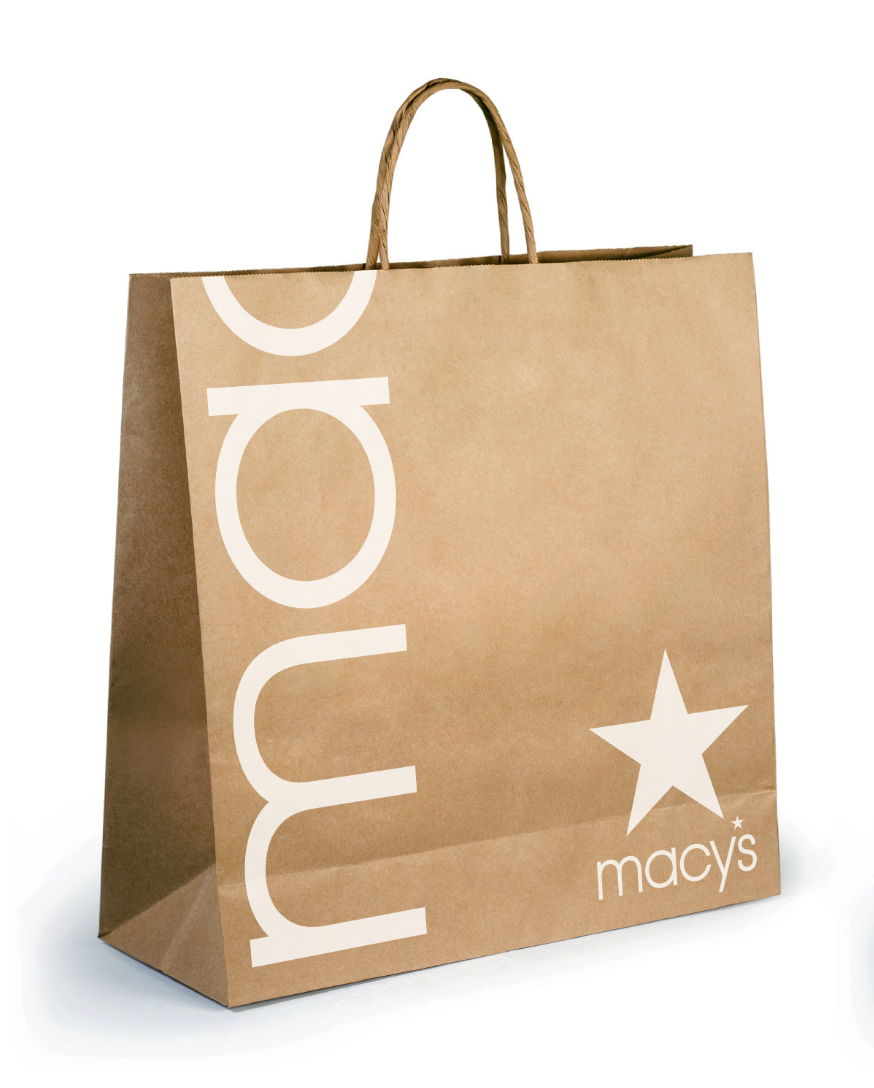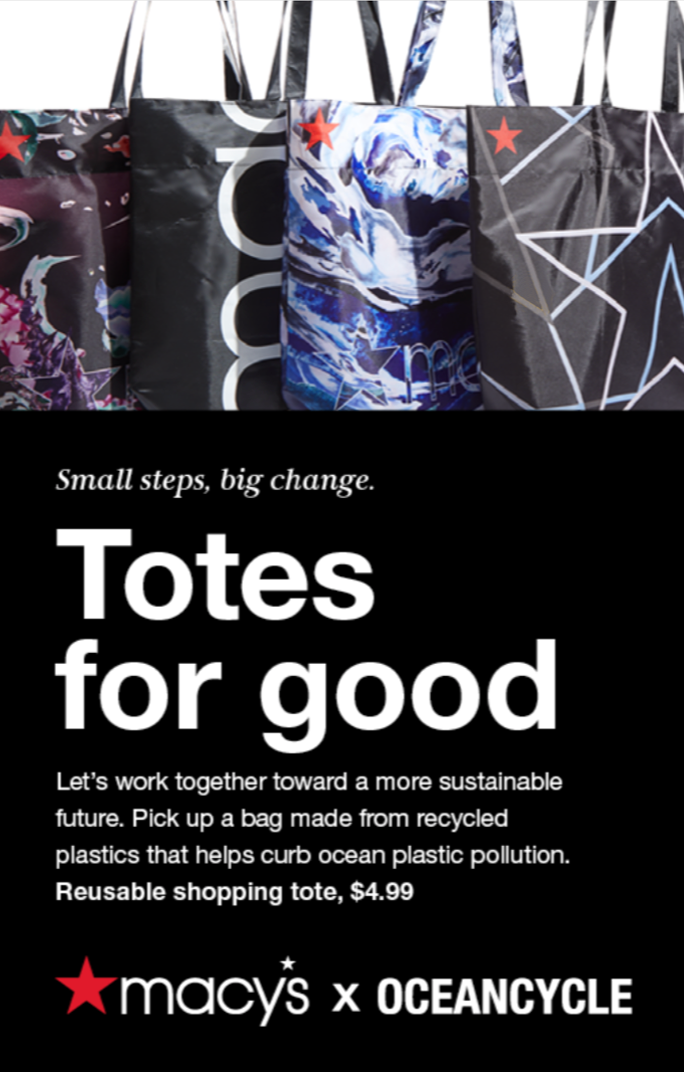Since 1858
The best part about leading a legacy brand is the chance to shape its unfolding story.

Macy's Herald Square on 34th Street NYC
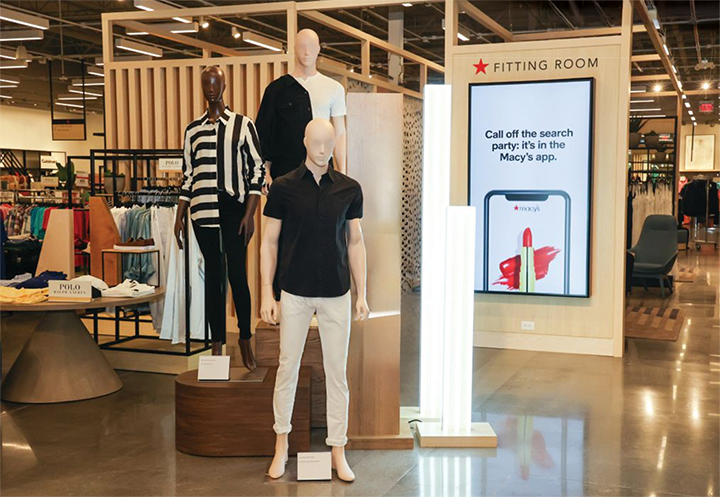
Market by Macy's small format store, Chicago

Macy's Tech offices, San Francisco
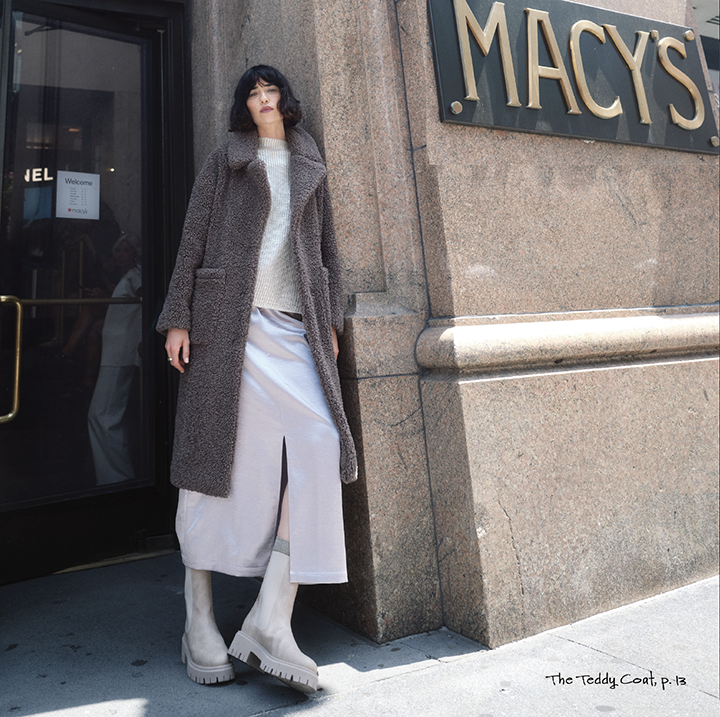
Then, and now
When Macy’s was ready to reorder shopping bags, we took the opportunity to explore more sustainable options. It wasn’t a mandate, but the retail industry had work to do in that area, and we were glad to be a part of it.


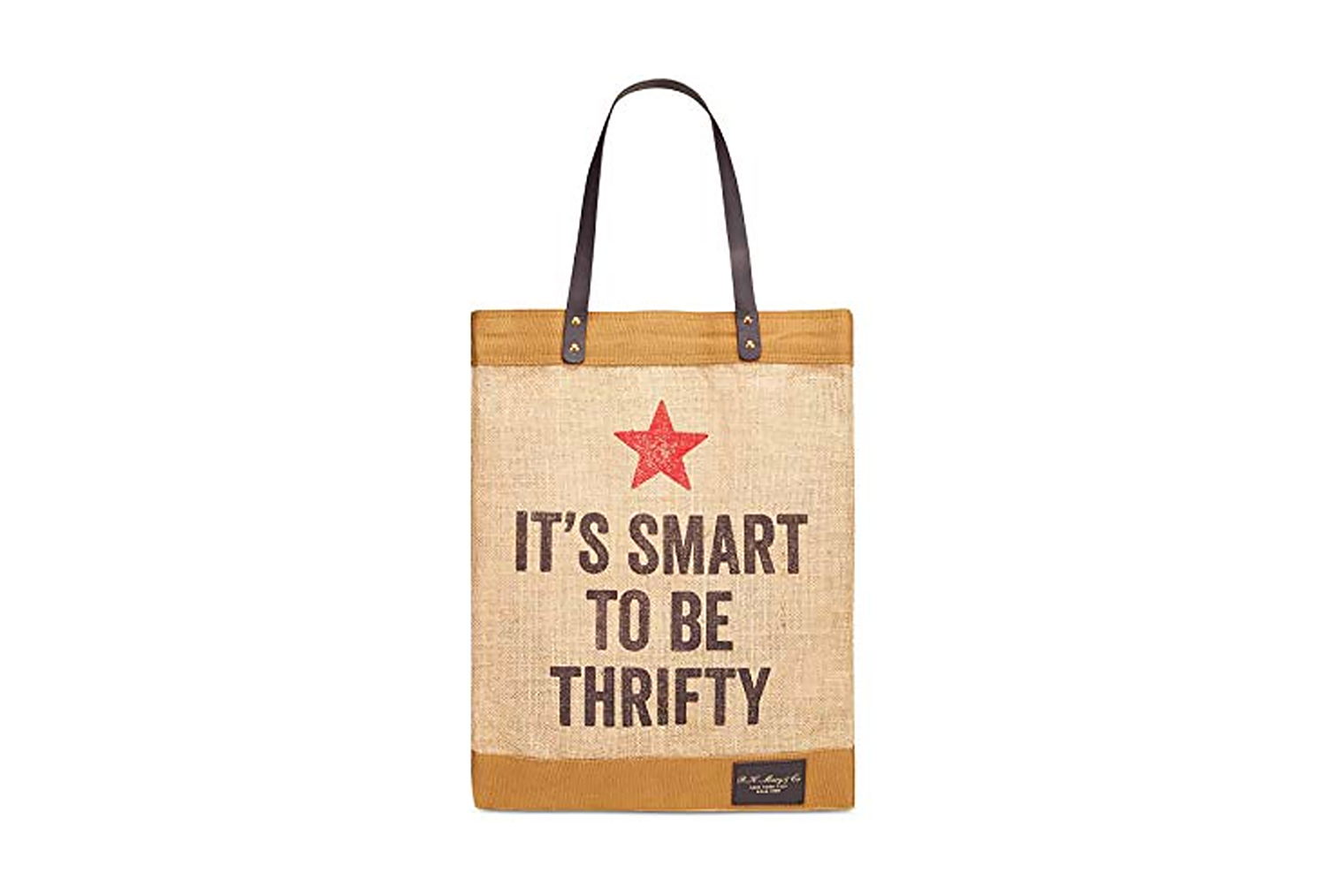


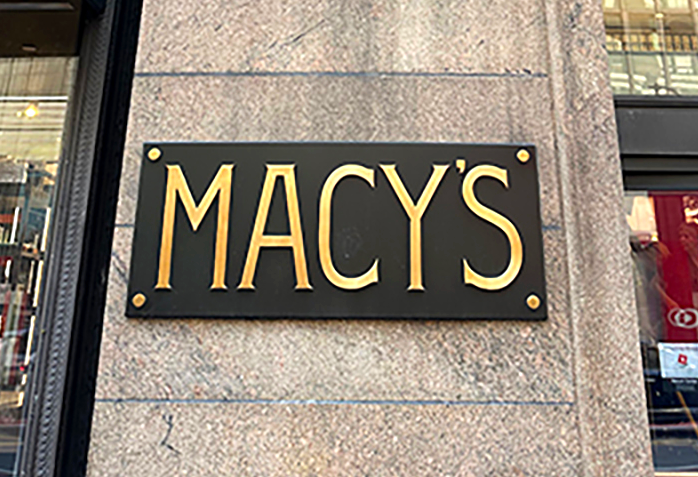
An early consideration was replacing the classic white paper bag with a higher recycled content substrate. Taking inspiration from the bronze fixtures at the iconic flagship store on 34th Street, some vintage Macy’s totes, and the natural wood fixtures in Market by Macy’s stores, we introduced a series of rich, warm colors into the brand palette, making unbleached kraft paper a compatible choice.
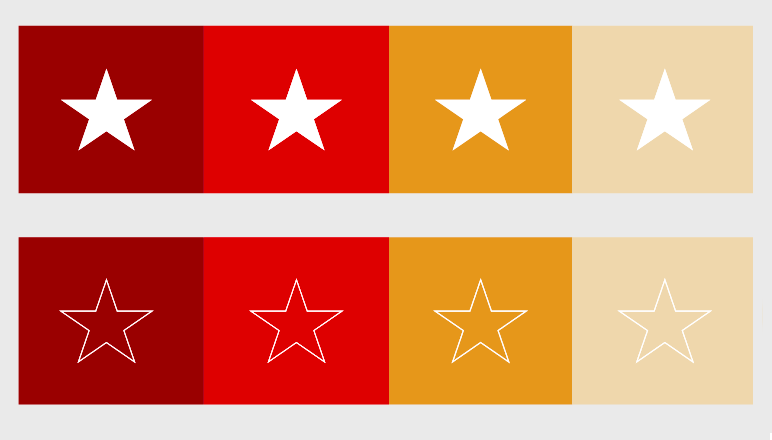
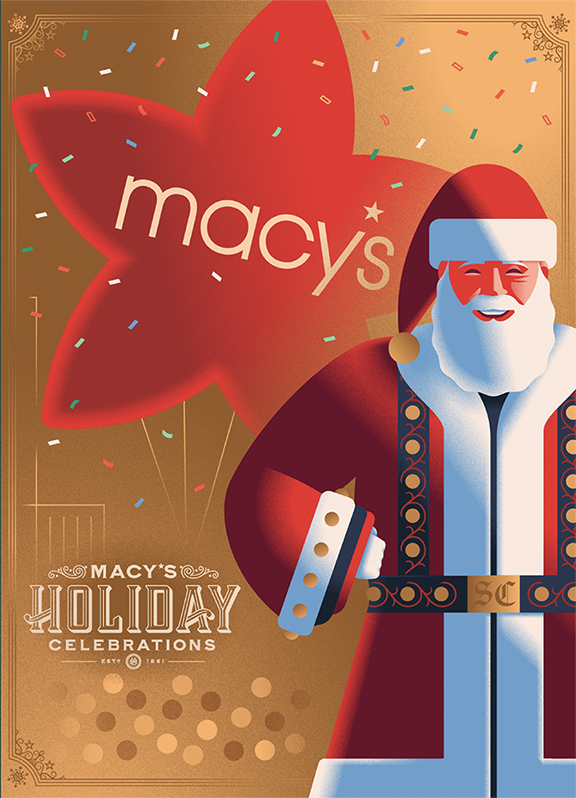



We replaced poly ecommerce gift bags with a heavyweight kraft stock and a bright red satin ribbon to encourage reuse.
And finally: an idea emerged to reduce the number of bags needed overall. In collaboration with OceanCycle and our manufacturer, we developed a reusable bag made of ocean-bound plastics collected seaside before salt water diminishes their suitability for recycling.
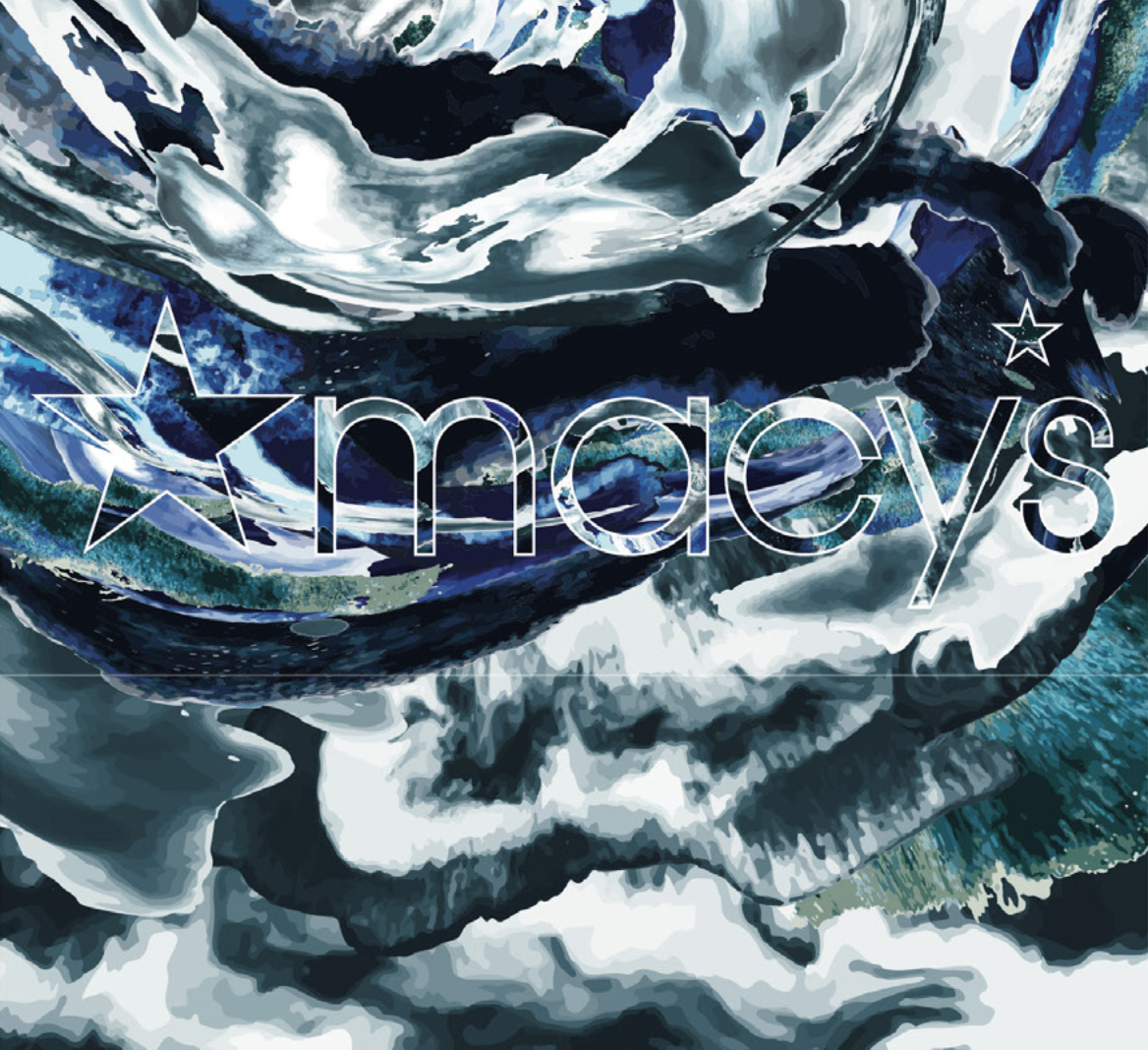
Thoughtful designs by fashion designer Natali Germanotta echoed the ocean, and the shapes of countries where the ocean-bound material was sourced. These and other branded options were offered at checkout with reuse incentives for loyalty customers.




The impact
The program reduced our production of single-use poly bags by 12%, utilized higher recycled content, and saved $1.4M in expense. At launch Macy’s became the world’s largest user of ocean-bound plastics, supporting economies of global seaside communities and protecting oceans worldwide.
